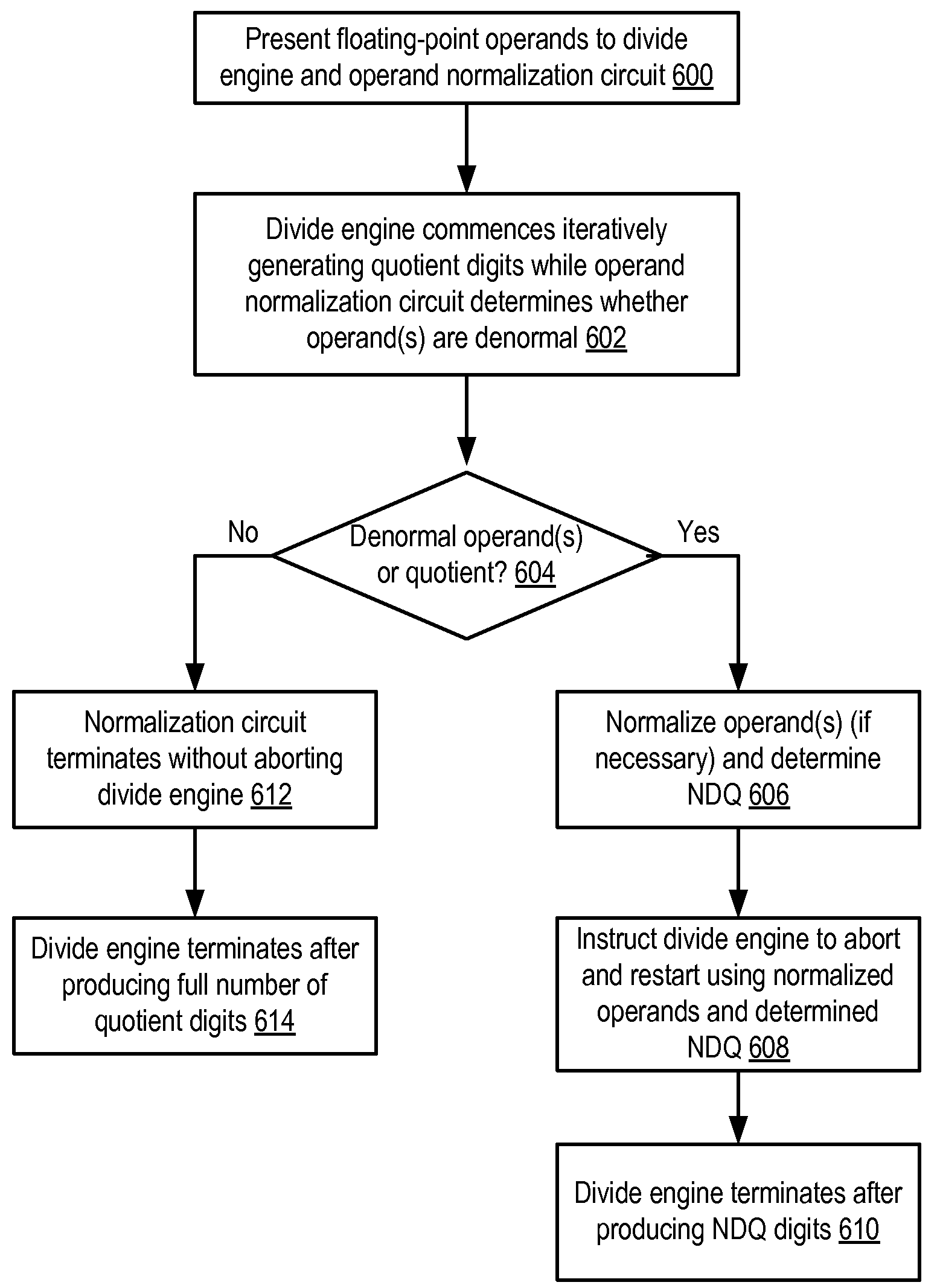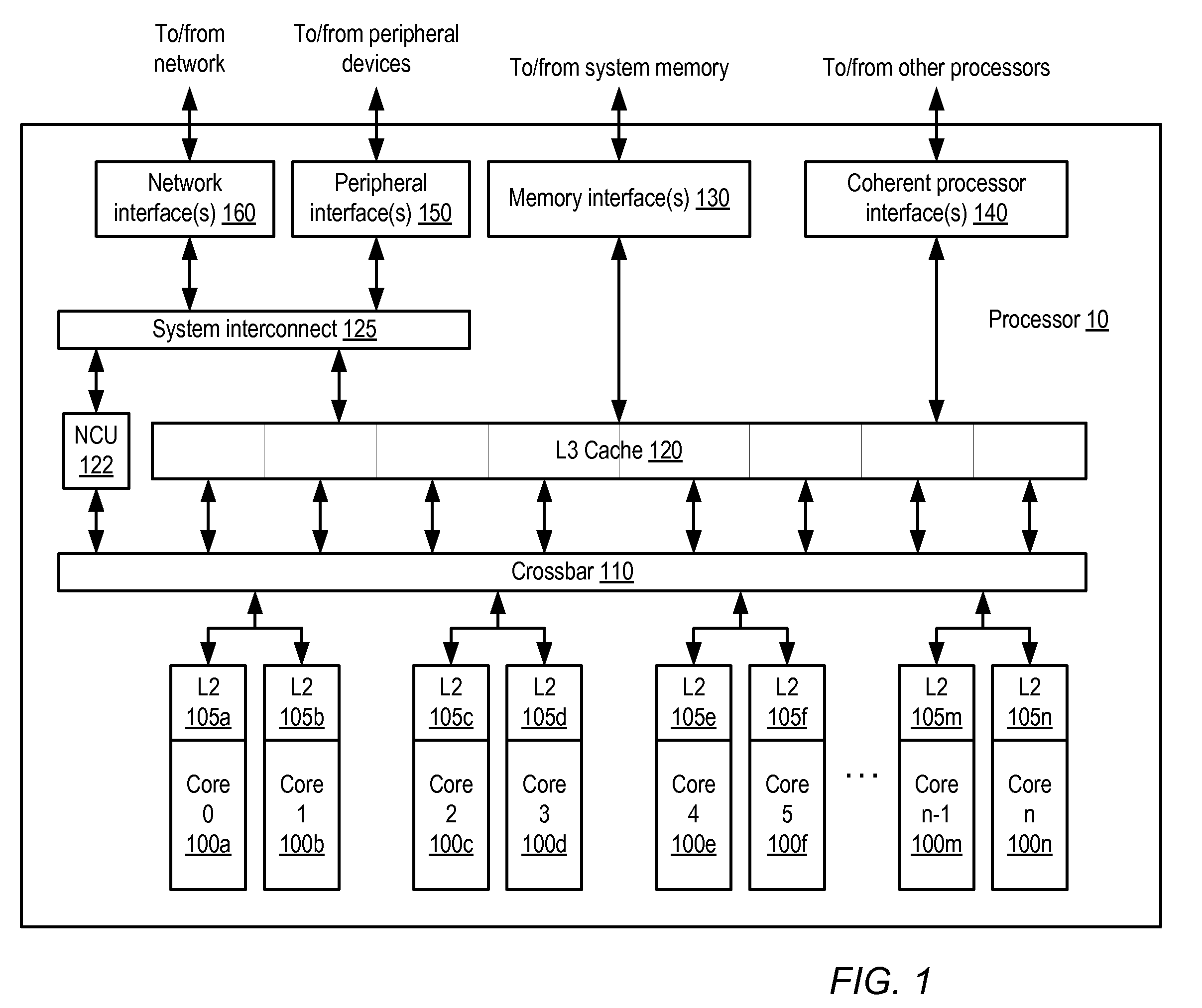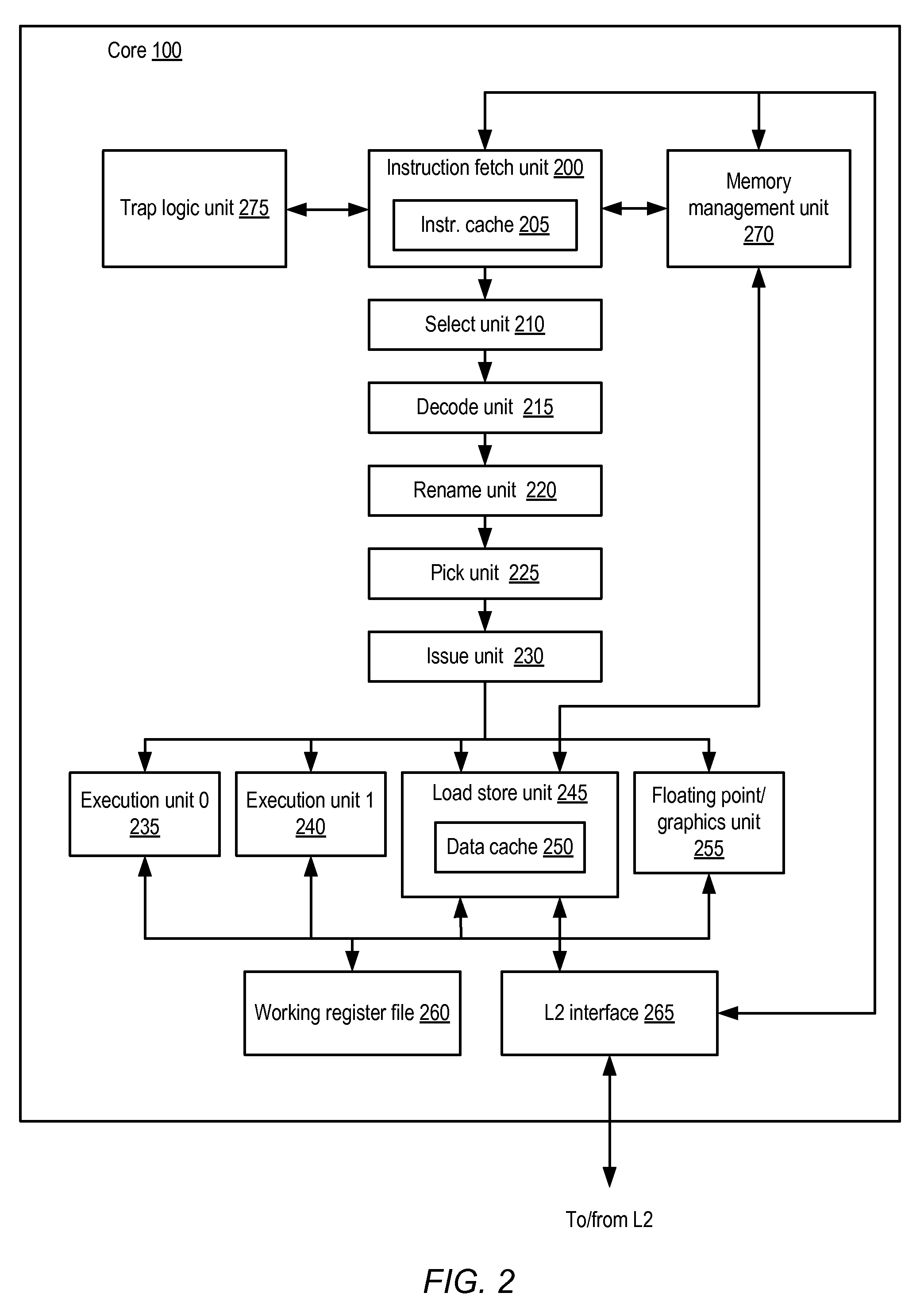Apparatus and method for implementing hardware support for denormalized operands for floating-point divide operations
a hardware support and denormalization technology, applied in the field of processing, can solve the problems of limited hardware support for floating-point division and substantial number of extra execution cycles
- Summary
- Abstract
- Description
- Claims
- Application Information
AI Technical Summary
Benefits of technology
Problems solved by technology
Method used
Image
Examples
Embodiment Construction
Introduction
[0015]In the following discussion, hardware support for division of floating-point denormal operands is explored. First, an overview is provided of one type of multithreaded processor in which floating-point division may be implemented. Next, a general overview of floating-point division is discussed. Particular embodiments of circuitry that are configured to support processing of denormal operands during division are then described. Finally, an exemplary system embodiment including a processor that may implement such denormal operand processing is discussed.
Overview of Multithreaded Processor Architecture
[0016]A block diagram illustrating one embodiment of a multithreaded processor 10 is shown in FIG. 1. In the illustrated embodiment, processor 10 includes a number of processor cores 100a-n, which are also designated “core 0” though “core n.” Various embodiments of processor 10 may include varying numbers of cores 100, such as 8, 16, or any other suitable number. Each o...
PUM
 Login to View More
Login to View More Abstract
Description
Claims
Application Information
 Login to View More
Login to View More - R&D
- Intellectual Property
- Life Sciences
- Materials
- Tech Scout
- Unparalleled Data Quality
- Higher Quality Content
- 60% Fewer Hallucinations
Browse by: Latest US Patents, China's latest patents, Technical Efficacy Thesaurus, Application Domain, Technology Topic, Popular Technical Reports.
© 2025 PatSnap. All rights reserved.Legal|Privacy policy|Modern Slavery Act Transparency Statement|Sitemap|About US| Contact US: help@patsnap.com



